Special Hobby 1/48 X-15A-2 | 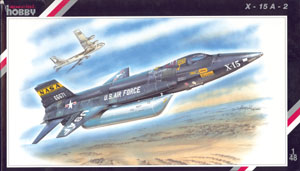 | History One of the most successful of all X-series aircraft, the X-15 was designed as a high speed research aircraft that was to provide information vital for the forthcoming manned space program and other aspects of high speed flight. There were three aircraft built by North American Aviation. The first flight took place in June of 1959 and the last flight took place in October of 1968, 199 flights in all by the three aircraft. Numerous records were broken by the aircraft and some of the pilots that flew the X-15 earned their astronaut wings. 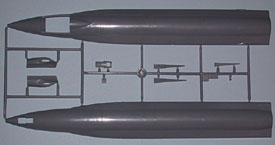 The Kit The Kit
When this model showed up at the local hobby emporium, I was currently working on the Collect Aire resin version of the same airplane and totally unaware that the injection molded version of the kit was about to be released. What do you do? Buy this kit as well. Why? If you're not used to building an all resin kit, go with the Special Hobby kit, because the majority is injection molded. And then there's the price. The Special Hobby kit is CONSIDERABLY less expensive. The Special Hobby kit represents the second X-15, which was rebuilt following an accident and designated X-15A2. The model consists of 28 injection molded parts and approximately 50 resin bits, with a small clear sheet for the windscreen and a detailed decal sheet. The back of the box has detail photos of the -A2 of the aircraft on 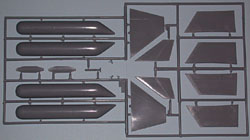 display at the Air Force Museum, which will be an aid in building the model. The instruction sheet is the typical exploded view type of instruction sheet and is relatively straight forward. If I were the nitpicky type I would mention that there are 2 steps 12 and 13, but I won't and besides, it does not interfere with the assembly of the model. display at the Air Force Museum, which will be an aid in building the model. The instruction sheet is the typical exploded view type of instruction sheet and is relatively straight forward. If I were the nitpicky type I would mention that there are 2 steps 12 and 13, but I won't and besides, it does not interfere with the assembly of the model. The injection parts consist of the fuselage, wings and tail surfaces. Panel lines are nicely engraved but some parts show minor tool marks which should be sanded away. Some parts also have a rough surface finish which can be rectified with minor sanding as well. The only alignment pins on the model are for alignment of the wings to the 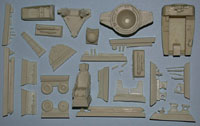 fuselage and one of those holes requires minor filing to accept the pin from the wing. All other injection molded parts are butt joint attachments. On my example an ejector pin mark on the vertical tail will require minor filing. fuselage and one of those holes requires minor filing to accept the pin from the wing. All other injection molded parts are butt joint attachments. On my example an ejector pin mark on the vertical tail will require minor filing. The resin bits consist of nose gear well, cockpit parts including the cockpit tub, separate instrument panel and ejection seat, as well as the rocket engine bell, various small parts and the tow dolly. The resin parts are finely cast and on my example there were no air bubbles in any parts. The nose gear well and cockpit tub appear to fit well and only minimal sanding should be required. The model comes with the tow dolly in multiple resin parts and does not give the option of 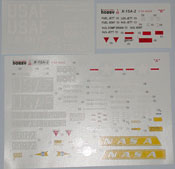 using the landing skids. using the landing skids. Decals are for 2 versions of the -A2, the natural metal(black) finish and the overall white scheme which represents the aircraft as it flew with a sprayed on ablative coating. There is a corrected sheet that has the proper style of lettering for some markings, but no correction addition for the misspelled PEROXYDE(should be PEROXIDE). Conclusion If you want to model this very historic aircraft, then I would highly recommend this kit. It's certainly less expensive than the Collect Aire kit and less of a challenge to assemble due to its injection molded parts. | 

 



|
